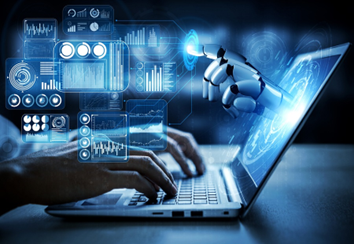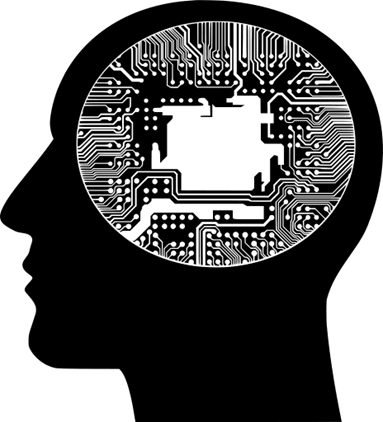Javier Yanes - Post 2
All students did a great job presenting and covering there topics to give a good understanding to the class. In the presentation, we covered the aspects of artificial intelligence. Students covered all sorts of topics covering AI such as, careers in AI, AI in mental health, AI in sports and economy, and AI in education.
first we started with group 3, we covered Artificial intelligence in Careers and Mental health. we cover government oversight and laws covering ai, government aid in research, Florida's future in ai, the progression of ai, and how ai will effect the economy.
Sabrina covers the National Initiative Act of 2020. It was released January first of 2021, making it a law, and the background behind the National Initiative act is to increase the research in AI and its development, not only providing funding for education and workforce training. Sabrina also covers how we must have leadership over AI. So that's prioritizing in its development in its research. It's also training for work.
Arianna covers the progression of ai. AI made its first appearance in the 1950 s. The first generation to ever kind of experience any sort of technology was generation X. They experienced this within schools. the beginning of it, kind of started when they started placing computers in schools, libraries, things like that. and then the 1980s, That's when AI Renaissance came in. and then in the 1990s when speech and video processing was created. and the 2000s with personal assistants, Facial recognition like our iphones. Self driving vehicles. 2010s graphic processers was created and large neural networks, and then the 2020s with omniverse with the ability to create 3d models. Arianna also covers Careers exposed to ai. some careers that have a high exposure include, budget analysis, data entry, tax preparers, technical writers, web developers, medium exposure, chief executive veterinarians, interior designers. careers with medium exposure include fundraisers, sales managers and then low exposures, barbers, child care workers, dishwashers, firefighters and pipe layers. So as you can see, the high exposure is more people who work remote who work behind a computer and then the lowest exposure obviously being the need for touch human interaction.
automation allows you to save time, and allows in place to focus on more needed aspects of their careers. So that is true. So like I said in the previous slide. efficiency, much quicker process data accurately leading to efficient outcomes cost reduction. AI is expected to have a profound impact on society in the next 20 years. By transforming healthcare, promoting environmental sustainability, and disrupting the job market, AI is likely to change the way we live and work in significant ways. While these changes may bring challenges, they also present opportunities for innovation, progress, and positive social impact.
The availability and maturity of artificial intelligence and machine learning technologies could be the catalyst for a massive wave of automation in all kinds of industries. In a recession where profits dip and human labor becomes one of a business’s biggest expenses, the incentive for companies to pursue automation will drastically increase
Group 2 covers AI in sports and the economy. they discuss how AI is infiltrated in sports and in the economy, the effects it has, and predictions of what it will become.
firstly, Francesco starts the presentation with the good in ai sports. In the last 5 years ai has improved in the performance analysis, data driven insights, and referee assistance. Ai powered video analysis technologies that have become indispensable for training and coaching athletes. They are able to give information on the player performance, track and analyze player motion automatically and provide insights on a team tactics. Large volumes of data can be processed by an ai and machine learning algorithms. giving coaches and teams more insight into a player's performance. Opponent tactics and game trends making tactical modification is a key application of a data driven method.
Gabriela covers the governments involvement with ai in sports. The Government has had history in supporting it by funding research, development, promoting innovation, and providing resources such as such as grants. And these grants can be for research. They also have funds and partnerships with sports organizations, and some of the projects that they have supported are the development of AI powered analytics, systems for performance, analysis and injury prevention as well as funded projects that use AI to enhance sports, broadcasting and fan engagement. for example, in basketball, There's sport VU, which is currently the world's leading optical tracking technology, And it uses camera systems that are installed in basketball arenas in order to track the real time positions of players, and it also tracks the ball at 25 times per second during basketball games, and this is in order to deliver performance statistics. It collects the data on player positions, the ball movement and other metrics which can be analyzed to gain insights into team performance player tendencies and strategic patterns. So basically it's just to know the players statistics and whether they're they're good at.
Group 1 discuss the pros, the cons of AI and education social life. they talk about the way that it has already begun to infiltrate those aspects, the area in which it may grow, how we predict that it may grow and what effect it may have in those areas.
veronica covers how Florida is handling education with ai. Florida is ranked as the lowest cost of tuition state wide, Florida also has one of the lowest student load rates, and one of the lowest tuition cost.
Isabelle covers the benefits as well as the negative sides to a I and education currently, in the next 5 years. AI has become something essential to most people's every day life. we all know everybody has been using, like Chad Gbt, like for everything, not just for like educational purposes, but anything in general. It has opened up new possibilities for learners, including all ages. Technological technological companies now offer a I courses that distinguish gaps and levels in their progress and goals. students have many learning methods. There isn't just one. The conventional learning system did not consider the option of customized learning which could benefit those who are disabled or who require more attention. The AI personalized learning system perceives knowledge and adapts to his or her process to minimize educational struggle. So for many years the educational system has kind of catered education to one type of person, one type of learning concept. So personalized learning would really benefit those who have, like Adhd, or just different, like learning disabilities. the negative factors to AI and education. One main factor is social detachment. Traditional classrooms allow deep and personal connections to flourish among students and teachers which also provides emotional support and guidance. It has a chance of causing students to lack emotional intelligence as well as social skills. another big problem would be job displacement for teachers. The rise of a I in education puts the world's educators at risk a. I should be something that complements educators and enhances their teachings, but definitely, not something that would replace them entirely
I think all 3 groups did a great job doing there presentations. Everyone made there parts understanding and gave the class useful information to help everyone achieve in making a good presentation.





Very nice reflection of the presentations.
ReplyDelete